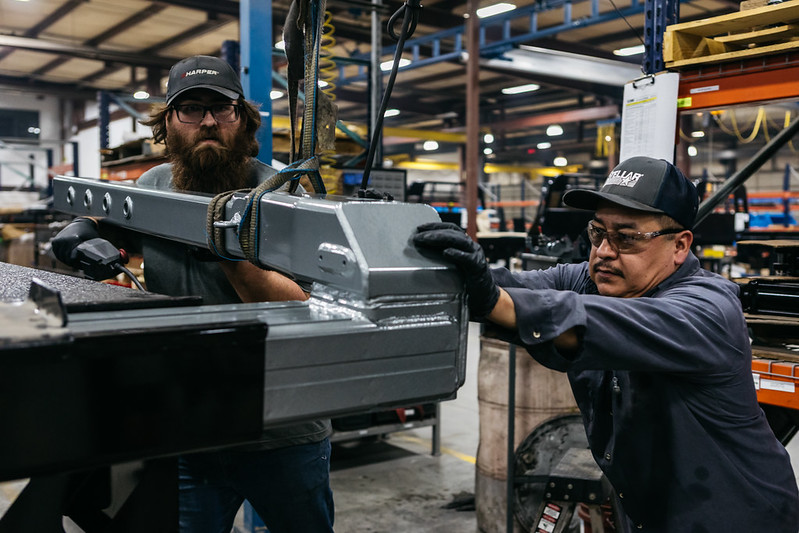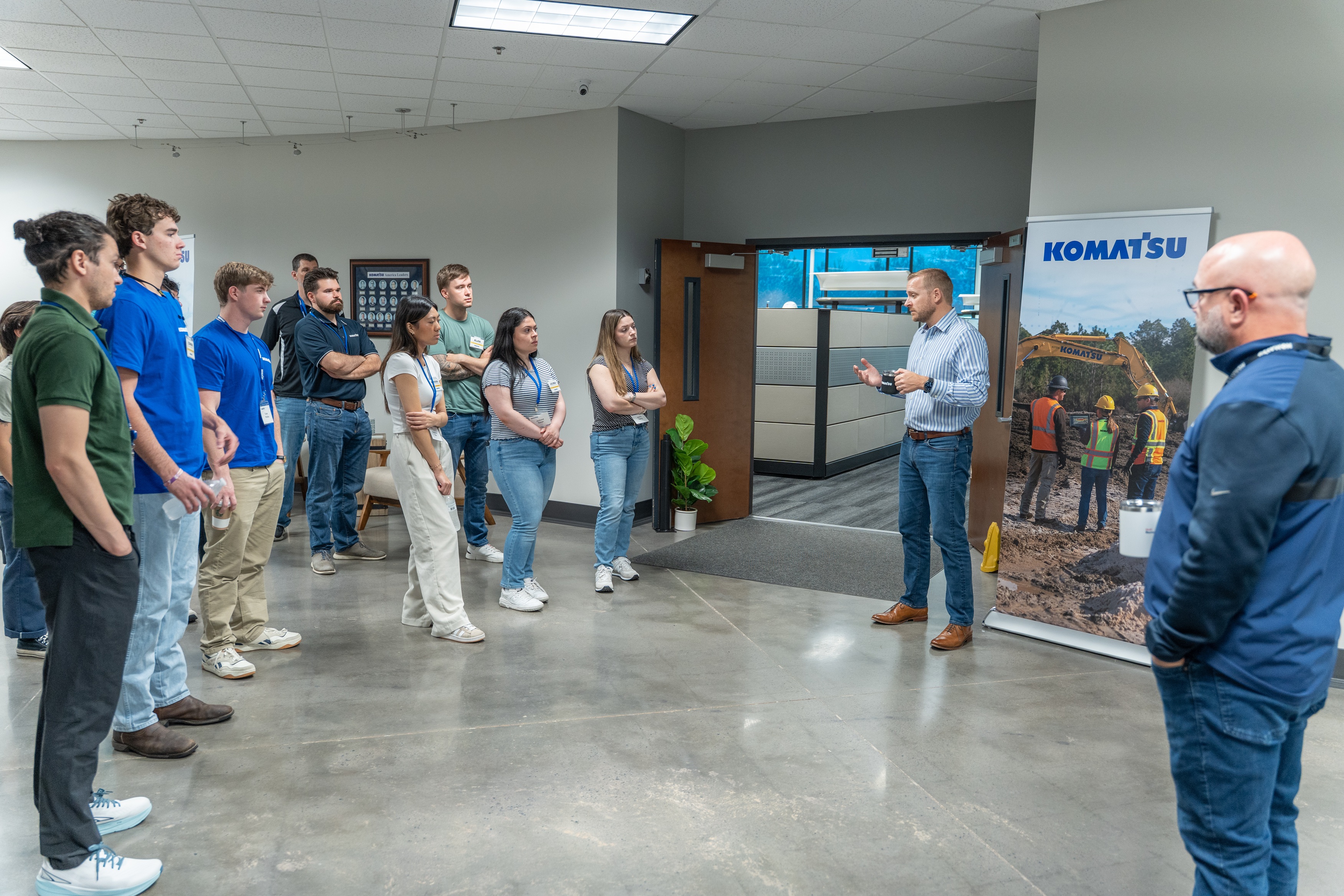Workplace diversity and inclusion (D&I) has quickly become a top priority for organizations of all types and sizes, and it’s not difficult to understand why.
There’s no overstating the importance of establishing a work environment where individuals with different backgrounds, languages, abilities, genders, political beliefs, race, age, ethnicity, culture, sexual orientation and religions are represented. In addition, that work environment must aim to empower every person to achieve more, gain a sense of belonging and feel respected, valued and heard.
“There is transformational power in embracing workplace D&I, because it leads to greater creativity and innovation for meeting the challenges and opportunities of any business,” said Lauren Gardner, corporate vice president at Microsoft, who shared her insights in diversity and inclusion at AEM’s recently held Workforce Solutions Virtual Summit.
For more support, ideas, or information related to diversity and inclusion, get started by visiting the AEM Workforce Solutions Toolkit.
While implementing D&I into the workplace is challenging, there are many benefits to be had. To achieve those benefits is no easy task, however, and it’s one which requires organizational leaders to embrace the idea that it is acceptable to be perceived differently.
Citing a quote from a commercial for Southern New Hampshire University, Gardener said “the world infinitely distributes talent but does not infinitely distribute opportunity. People want to achieve more but many have a different set of circumstances, abilities and backgrounds that often lock them out of participating.”
Bestcolleges.com has created a financial aid guide filled with scholarships for students of color. It covers how to complete FAFSA, scholarships by demographic groups, and grants. View it here.
CHALLENGES AND ADVANTAGES
Gardner stressed that when it comes to D&I, companies must think beyond just needing to increase representation.
“By actively engaging different perspectives, companies can stretch their thinking, enrich the experiences of employees and empower them and every organization to achieve more,” she said.
Employees from similar backgrounds think about situations and challenges in a similar way and therefore do not think critically. Diverse employees, on the other hand, bring a variety of different perspectives and experiences to the table, which generates new ideas and alternative solutions to problems.
A key challenge to diversity and inclusion is that “we are all a reflection of our experiences and those vary greatly around the block and around the globe,” observed Gardner. Another chief difficulty is that it is uncomfortable to talk about D&I, because many people have been conditioned by society to not share and discuss personal issues in the workplace.
Creating D&I in the workplace, stressed Gardner “is hard, it is messy, and we are almost never guaranteed to get it right all the time, but we must press forward.”
MICROSOFT’S METHODOLOGY
Microsoft’s takes a five-prong approach to diversity and inclusion, one which is:
- Mission focused
- Outcome oriented
- Globally informed
- Science based, and
- Culturally competent
All of its strategies, according to Gardner, seek to bring on people with diverse backgrounds who feel respected for the experiences they have, are appreciated for who they are and have opportunities for growth and development. Everyone, not simply employees who work in HR, but customers and partners as well, need to understand the case for diversity and inclusion and realize the value it can bring.
THE JUSTIFICATION FOR D&I
Gardner cited three specific reasons for diversity and inclusion in the workplace – a business reason, a geopolitical reason and a human reason.
The business case is that D&I is strategically valuable in generating corporate and industry innovation and increasing profitability, she said. Moreover, companies that embrace diversity and inclusion practices are more likely to recruit and retain top talent, as well as reduce turnover by increasing employee satisfaction, productivity and innovation.
The goal is for all employees is “to maximize their discretionary impact, have a fantastic career and work in a culture where they can expand their discretionary effort,” said Gardner.
While there are those that say having a diverse organization could be harder because people are not alike, she said the reality is diverse companies are more innovative and outperform the competition by roughly 35%.
As for the geopolitical case for D&I, Gardner said, “We are in a more global and complex environment that includes globalization, legislation and activism. Many companies around the world are legislating diversity and inclusion in ways they haven’t before. How do we meet these needs, and how do we address customers and the workforce that is shifting and changing by the moment?”
More employees are bringing greater diversity of beliefs, values and motivations, and they want to have conversations about cultural and political issues, their own life experiences – good and bad – and concepts of privilege.
“These are important so we can understand, learn and explore how we can create an inclusive an environment as possible,” Gardner added.
THE IMPACT OF EXCLUSION
Not often talked about is the human case for diversity and inclusion, said Gardner. “It is important to acknowledge that feelings of exclusion – whether or not it is intentional or accidental – activate the brain in a way similar to physical pain.”
She explained that there are six scientifically proven ways exclusion hurts. It:
- Reduces intellectual thought and reasoning
- Increases self-defeating behavior
- Reduces prosocial behavior
- Impairs self-regulation
- Increases defensiveness, and
- Decreases well-being
“Companies that can really challenge the things that impact the human, geopolitical and human case will be the ones that are really going to be set and established for the long run because they are maximizing the discretionary effort of everybody,” said Gardner.
“We integrate D&I into our processes, behaviors and operational rhythms. We are always learning and thinking about development opportunities and our experiences,” said Gardner. “A more diverse and inclusive culture is an ongoing endeavor that is everyone’s responsibility. We are never finished from learning from one another or understanding and seeking perspectives that we perhaps don’t have.” -- Lauren Gardner, corporate vice president at Microsoft
INSIDE MICROSOFT
According to Gardner, Microsoft’s D&I initiative is diffused across the company to address opportunities and needs and to continue to improve its D&I journey.
“We integrate D&I into our processes, behaviors and operational rhythms. We are always learning and thinking about development opportunities and our experiences,” said Gardner. “A more diverse and inclusive culture is an ongoing endeavor that is everyone’s responsibility. We are never finished from learning from one another or understanding and seeking perspectives that we perhaps don’t have.”
Microsoft has eight employee resource groups that support the communities and the members. The groups, which have been instrumental in helping develop polices and processes that support the company’s people, are:
- Blacks at Microsoft (BAM)
- GLEAM (Global LGBTQI+ Employees and Allies at Microsoft)
- Asians at Microsoft
- Hispanic/Latinx (HOLA)
- Disability at Microsoft
- Military at Microsoft
- Families at Microsoft
- Women at Microsoft
In addition, Microsoft has an infrastructure for inclusion to help its employees learn and build empathy and capability, plus provide support to the maximum number of employees possible, noted Gardner. There are also inclusive capabilities for helping employees broaden the company’s thinking and have D&I discussions “which are typically difficult to have.”
These capabilities include:
- Practicing awareness – understanding and mitigating the unconscious bias in one’s thinking
- Exercising curiosity – having a growth mindset and understanding and valuing the perspective of others through humility and empathy
- Demonstrating courage – helping break through the barriers and embrace challenging conversations
Then there is the matter of internal hiring experiences.
“It doesn’t do a company any good to only think about bringing people in the door and not thinking about the lived experiences but also about their career growth and development,” said Gardner. “We are working to get better at the balance of recruiting and development.”
She stressed the companies must also think much more broadly than they have in the past about “expanding the talent aperture to get the widest set of talent to meet customer and business needs.”
A BROAD-GAUGE STRATEGY
The Microsoft Global Talent Acquisition organization has a diversity and inclusion strategy that recruits through several main components:
- Having every hiring team look at a diversity of candidates to consider talents that may not have been considered in the past.
- Having leadership take a data-driven approach to understanding the challenges of the D&I space, learn where progress was made, discover where progress was not made, determine the necessary solutions and drive accountability for making the fixes.
- Making sure the recruiting data, policy, practices and tools are designed and embedded with inclusion at the forefront and not as an afterthought.
TAKING A HORIZON VIEW
Any diverse and inclusive type of work can feel daunting, observed Gardner. To get more focused and be able to measure how it is doing in order to course correct in real time, Microsoft took a horizon view, looking at what it would be doing with its four D&I strategy areas:
- Recruitment enablement
- Hiring team capability
- Leader accountability.
- Recruitment data, policy, practices and tools
Horizon 1 focused on improving foundations over the course of one year. Horizon 2 focused on finding tactical gains from year one through year three. Horizon 3 then tackled strategic improvements over year three through year five.
Like many companies, Microsoft is always looking to broaden its talent aperture, Gardner said. In addition, it’s rethinking schools and skills. Since not everyone can afford a college degree, the company is taking a skills-based view toward the people it is considering and thinking about building that talent more systematically.
Gardner pointed to three programs at Microsoft:
- LEAP Engineering Acceleration Program – an internship for people who are passionate about technology.
- Microsoft Software & Systems Academy Program (MSSA) – for members of the military who are looking to transition into the corporate world
- disAbility Hiring – to hire people with disabilities
DEALING WITH TALENT SHORTAGES
“When you are thinking about your talent pool, are you thinking broadly enough?” Gardner asked. “Are you thinking perhaps about candidates or profiles that you haven’t thought about and could be missing out on great skills and talent?”
She said she believes companies must learn how to deal with talent shortages by expanding the talent aperture and by recruiting, growing and developing talent in more creative ways than they have been done in the past.
Adding to the talent challenges, she noted that:
- Since 2015, there are five generations in the workforce at once.
- Employees expect employers to take a stance on social issues and are using activism to push for change.
- Millennials and Gen Z employees want careers with social impact and purpose.
Microsoft participates in a second-chance business initiative that involves employability of people that have be incarcerated, said Gardner.
“As odd as that my sound, companies need to be able to think as broadly as they can about all talent pools that have not been considered in the past,” she continued. “We are always looking to broaden our thinking in terms of the talent that can grow, thrive and succeed.”
ONGOING OPPORTUNITIES
The evolving journey to a diverse, equitable and inclusive culture within an organization presents employers with an amazing and ongoing opportunity to learn, to broaden their talent pools and to meet customer, partner and societal needs around the world, more effectively than ever before. It won’t be easy, and success will not come quickly or easily. But ultimately, said Gardner, lessons will be learned, and progress will continue to be made.
“And, ultimately, companies that can broaden their talent aperture in creatives ways will get more discretionary efforts from existing employees, and they will get more people who support their brand,” she added.
LEARN MORE
For more support, ideas or information, get started by visiting the Workforce Solutions Toolkit or contact Senior Director Workforce & Industry Initiatives Julie Davis at jdavis@aem.org.
For more perspectives from subject matter experts on topics impacting the equipment manufacturing industry, subscribe to the AEM Industry Advisor.





